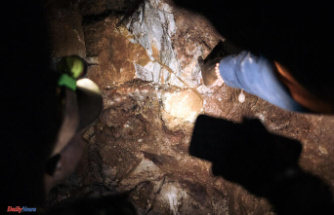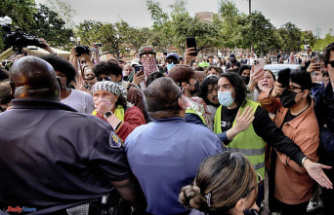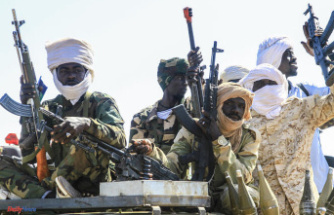This is a new shock for the ready-to-wear sector. Less than five months after Camaïeu's sudden liquidation and while the Go Sport group is in turmoil, Kookaï announced its placement in receivership on Wednesday February 1. For the moment, nothing changes for the 121 French shops and their 320 employees, during this procedure intended to allow the continuation of the company's activity, the maintenance of employment and the clearance of liabilities, thanks to the appointment of a legal representative to administer all or part of the company.
The receivership before the Paris Commercial Court "is not an end in itself", but "an opportunity to bounce back and improve (our) financial situation", explains a press release from the brand that invented the " kookaïettes", "those sassy and cruel young women with men" featured in noticeable advertising campaigns.
Kookaï "seriously lacked means and support from banks" during the pandemic, regretted the ready-to-wear brand, citing in particular two refusals of a loan guaranteed by the State (PGE).
Created in France in 1983, the brand "made the media buzz [...] and seduced a clientele of consumers aged 15-16", who remained loyal to it thereafter, explained to Agence France-Presse (AFP ) Kookai's marketing department. It then expanded to Australia in the 2000s and was bought in 2017 by Australian businessman Rob Cromb from the Vivarte group (which then included Caroll, Minelli, La Halle, Naf Naf, Chevignon…), liquidated in 2021.
In Australia, positioned rather "on the high end", Kookaï "hits" with 800,000 followers on Instagram, said the marketing department. The objective was to instill this revival in France, but "we lacked the means", not to mention that Rob Cromb bought a company from Vivarte which suffered from a "huge social debt", she continued. In 2022, Kookaï posted a turnover of 45 million euros, up 18% compared to 2021, but down 25% compared to 2019.
For the clothing sector, the end of the pandemic does not mean a return to the situation before Covid-19: sales in 2022 remain almost 10% lower than their 2019 level, explained in September to the AFP Gildas Minvielle, director of the economic observatory of the French Fashion Institute (IFM). "These successive pieces of news are always shocking because there are a lot of jobs concerned," the director of the IFM's economic observatory reacted to AFP on Wednesday, recalling the "difficulties of the mid-range, which has a lot of actors and for whom it is difficult to stand out".
In addition, the sector remains very affected in France by the sudden judicial liquidation of Camaïeu at the end of September, which led to the dismissal of 2,100 employees. He finds it increasingly difficult to acknowledge the blows. Other major brands are indeed experiencing shocks, such as the Go Sport group, the holding company of the brand specializing in sport, declared in mid-January in receivership by the Grenoble commercial court.
Friday, January 27, the elected staff of the ready-to-wear brand Gap France exercised their right to alert in order to obtain information on the situation of their company, bought in 2021 for one euro by the HPB group (Hermione People












